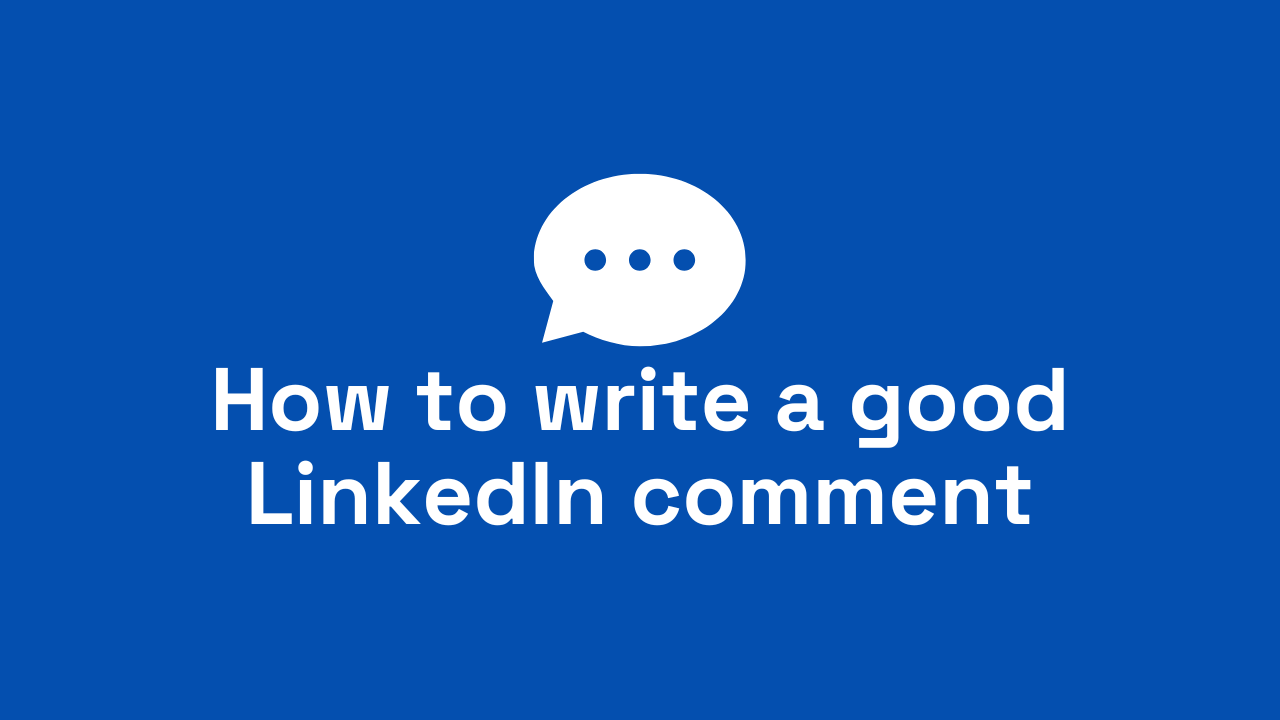LinkedIn is full of posts competing for your attention every day. But if you want to stand out and show who you really are, leaving thoughtful comments can do wonders. Comments are not just for starting conversations—they help you network, increase your visibility, and position you as a leader in your field. Knowing how to craft a good comment is key to making your mark on LinkedIn.
Why Are Good Comments Important?
Increase Engagement: A well-thought-out comment keeps the conversation alive. When you comment, it pops up in your network’s feed, increasing the chances for others to see the post and connect with you.
Build Stronger Relationships: Engaging with someone’s post shows you value their thoughts. Regular interactions can foster strong professional relationships and open doors to new opportunities for collaboration.
Show Your Expertise: Thoughtful comments highlight your knowledge and position you as an expert. This can attract attention from peers and potential clients who appreciate your insights.
Attract Profile Visits: Interesting comments can make people curious about you, leading them to check out your profile. This can result in new connections and business opportunities.
How to Write a Great LinkedIn Comment
1. Avoid Generic Comments:
Skip the “Nice post!” or “I agree.” These add little value and can seem like spam. Instead, be specific about what caught your eye. For example, “I agree that remote work boosts productivity. We’ve seen big improvements at my company after adopting flexible work policies.”
2. Engage with Substance:
Read the post carefully before commenting to understand the context. Mention key points or questions the author raised. This shows you’re genuinely interested and not just commenting for visibility.
3. Be Authentic and Personal:
Real interactions build trust. Share your experiences or thoughts on the topic while letting your personality shine through. For example, “I’ve noticed that giving my team flexible hours has greatly improved morale. It’s amazing how a small change can make such a big difference!”
4. Ask Insightful Questions:
Engage the author and readers by asking thoughtful questions. This can spark deeper discussions. For example, “Where do you see this trend heading in the next year?”
5. Add Value to the Discussion:
When you comment, think about how you can contribute new insights or expand on the post’s ideas. Here are some ways to add value:
- Share Relevant Experiences: Describe a situation where you applied a similar idea and what the results were. This gives context and real-world application to the topic. For example, “We implemented a remote work policy last year, and it led to a 20% increase in productivity.”
- Introduce New Perspectives: Offer a different angle or alternative viewpoint. For instance, “While I agree with the benefits of remote work, I’ve found that hybrid models also have unique advantages, such as…”
- Discuss Industry Trends: Relate the post to wider trends in the industry, showing you understand the broader context. “This aligns with what I’ve been seeing in tech companies, where the focus is shifting toward more agile work environments.”
- Suggest Practical Tips: Offer actionable advice or strategies that others might find useful. For example, “We implemented a weekly check-in system to keep our remote team aligned, which has worked wonders for us.”
6. Be Professional but Personal:
LinkedIn is a professional platform, but that doesn’t mean you can’t be personal. A bit of personality goes a long way. Share your insights with a personal touch while keeping the tone respectful and on-topic.
7. Be Clear and Concise:
While it’s important to be thorough, aim to be clear and brief. A short, clear comment is more likely to be read and appreciated.
8. Respond to Replies:
If someone replies to your comment, take the time to respond. This keeps the conversation going and can lead to meaningful connections.
9. Proofread Your Comments:
Avoid typos and grammar mistakes that can weaken your message. Check your comment before posting to ensure it’s clear and professional. Tools like Grammarly can help catch errors.
Extra Tips
- Avoid Spammy Behavior: Don’t post the same comment on multiple posts. Tailor each comment to the specific content.
- Tag Relevant People: Mention others in your comment if it makes sense, to bring them into the conversation. For example, “@JohnDoe, you had a similar thought last week. What do you think about this?”
- Use Data to Support Your Points: Use data or statistics to strengthen your points. For instance, “A recent survey showed a 60% productivity boost with flexible work policies.”
- Share Useful Resources: If you know of helpful articles or tools related to the topic, share them to add more value.
Writing effective comments on LinkedIn is a great way to stand out. By focusing on real engagement and providing useful insights, you’ll boost your visibility, strengthen your network, and show yourself as an expert.



